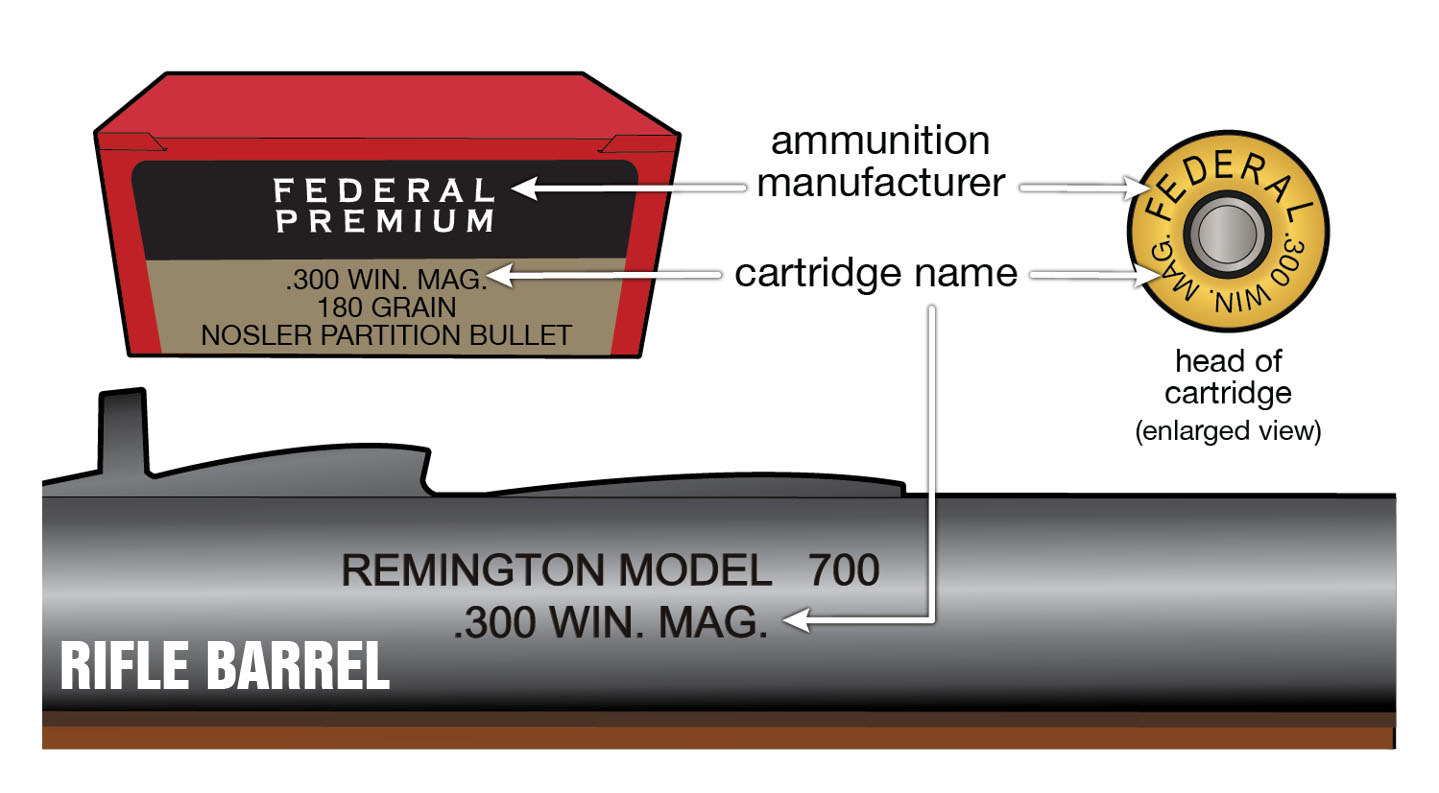Before loading ammunition into a firearm, it's critical that you check each cartridge to ensure it matches your firearm's data stamp perfectly. NEVER load any ammuntion which does not match your firearm!
The data stamp on a firearm should always be located on the barrel. It however may also be found in additional places on the receiver.
Above, you can see an example of a firearm barrel. In this case the data stamp says ".300 Win. Mag." which stands for .300 Winchester Magnum. The ONLY cartridge you can put into that rifle safely would be a .300 Winchester Magnum.
If you look at the box of ammunition on the left hand side, you will see that the box says it contains .300 Winchester Magnum cartridges. These are the correct ones to use and would be safe.
On the bottom of the cartridge, you can also see stamped into the casing, it says ".300 Win. Mag."
If for any reason a firearm does NOT have a data stamp, you should take it to a qualified gunsmith immediately to have it measured and stamped.
Never use any ammunition if you are not 100% certain it came from a reliable source. Faulty ammunition can cause squibs.
What is a Squib?
Squib rounds are possible in all firearms. They are most often caused by negligence in the powder loading process (insufficient or no powder load), or a failure of the primer to ignite the powder at all. In the case of no gunpowder in the cartridge, the primer, when struck, produces just enough force to push the bullet into the barrel but no further. Subsequent rounds will pile up in a very strong weapon or destroy a weaker one. This occurs most often because of handloading by inexperienced reloaders.
How to Diagnosis a Squib
Signs of a squib include:
- Much quieter and unusual discharge noise. Smaller or empty powder loads, combined with the primer discharge echoing in the casing or barrel, produce an unusual noise. This noise is often called a "ping" or "pop", rather than the expected "bang" of a standard shot.
- Lighter or nonexistent felt recoil force. Lower force on the projectile, insufficient to clear the barrel, translates to a lower recoil force, which may be completely absorbed by the firearm's recoil mechanisms.
- Discharge from the ejection port or cylinder gap, instead of the barrel. The primer and any burned powder produce smoke, less than a standard load, which cannot be vented through the barrel as normal.
- Failure of the action to cycle (in automatic or semi-automatic firearms). Recoil operated, blowback, and blowforward semi-automatic designs rely on the recoil force to eject the spent casing and cycle the next round. Lighter recoil force may not be sufficient to cycle the action. Likewise, gas operated firearms may have insufficient volume of gas to cycle the weapon.
Squib loads are also referred to as "pop and no kick", in recognition of the above symptoms.


